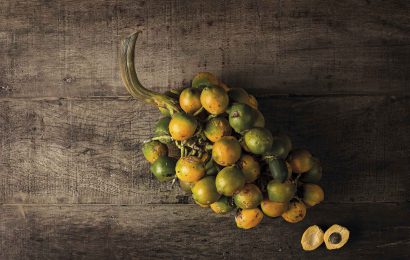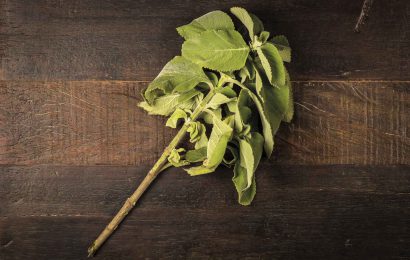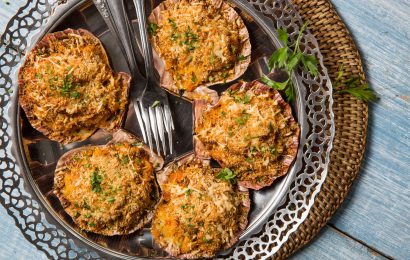THE VARIETY OF manioc flours produced in Brazil is so great that the country’s Ministry of Agriculture, livestock and Supply issued a normative instruction in 2011 to set official standards for the classification of this product. In general, there are three groups: farinha seca (dry flour), farinha d’água (literally “water flour”, a fermented product) and farinha biju (flaked); they are further classified as fine, medium or coarse grained. Raw or toasted, the ingredient has an extensive use in the country’s cuisine since way before the Portuguese arrived. In História da alimentação no Brasil (History of Food in Brazil), Câmara Cascudo registers that manioc flour, for the native Indians, was “the essential and primary conduit, accompanying all edible things, from meat to fruit,” and completes stating that “it is the primitive layer, the fundamental basalt in Brazilian food”. Manioc flour is used to prepare Tutu de feijão (manioc flour and bean mush), Paçoca (ingredients, such as salt-cured meat or cashew nuts, pounded in a mortar with manioc flour), farofa (seasoned and toasted manioc flour), and pirão (savory manioc flour porridge), among other emblematic recipes.
Privacy Overview
This website uses cookies to improve your experience while you navigate through the website. Out of these, the cookies that are categorized as necessary are stored on your browser as they are essential for the working of basic functionalities of the website. We also use third-party cookies that help us analyze and understand how you use this website. These cookies will be stored in your browser only with your consent. You also have the option to opt-out of these cookies. But opting out of some of these cookies may affect your browsing experience.
Advertisement cookies are used to provide visitors with relevant ads and marketing campaigns. These cookies track visitors across websites and collect information to provide customized ads.
Analytical cookies are used to understand how visitors interact with the website. These cookies help provide information on metrics the number of visitors, bounce rate, traffic source, etc.
| Cookie | Duration | Description |
|---|---|---|
| cookielawinfo-checkbox-analytics | 11 months | This cookie is set by GDPR Cookie Consent plugin. The cookie is used to store the user consent for the cookies in the category "Analytics". |
Functional cookies help to perform certain functionalities like sharing the content of the website on social media platforms, collect feedbacks, and other third-party features.
| Cookie | Duration | Description |
|---|---|---|
| cookielawinfo-checkbox-functional | 11 months | The cookie is set by GDPR cookie consent to record the user consent for the cookies in the category "Functional". |
Necessary cookies are absolutely essential for the website to function properly. These cookies ensure basic functionalities and security features of the website, anonymously.
| Cookie | Duration | Description |
|---|---|---|
| cookielawinfo-checkbox-necessary | 11 months | This cookie is set by GDPR Cookie Consent plugin. The cookies is used to store the user consent for the cookies in the category "Necessary". |
| viewed_cookie_policy | 11 months | The cookie is set by the GDPR Cookie Consent plugin and is used to store whether or not user has consented to the use of cookies. It does not store any personal data. |
Other uncategorized cookies are those that are being analyzed and have not been classified into a category as yet.
| Cookie | Duration | Description |
|---|---|---|
| cookielawinfo-checkbox-others | 11 months | This cookie is set by GDPR Cookie Consent plugin. The cookie is used to store the user consent for the cookies in the category "Other. |
Performance cookies are used to understand and analyze the key performance indexes of the website which helps in delivering a better user experience for the visitors.
| Cookie | Duration | Description |
|---|---|---|
| cookielawinfo-checkbox-performance | 11 months | This cookie is set by GDPR Cookie Consent plugin. The cookie is used to store the user consent for the cookies in the category "Performance". |



